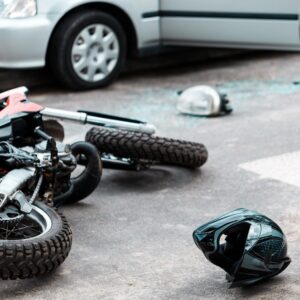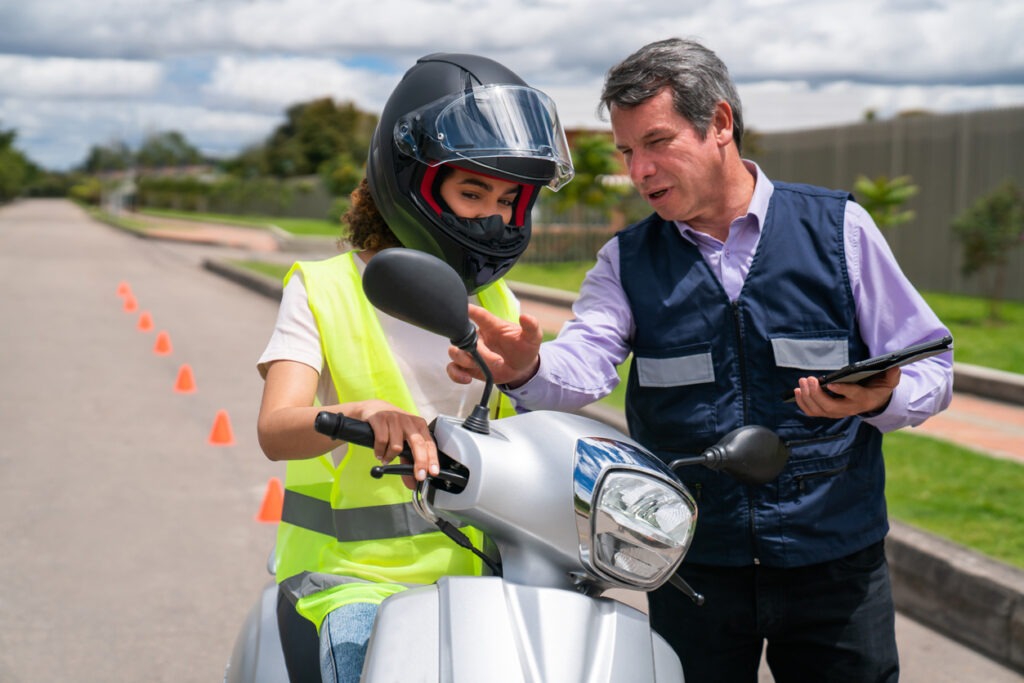
Motorcycles are fuel-efficient, fast, and maneuverable. They are a practical choice for short trips, commuting, and adventure. Unfortunately, motorcycles are also more dangerous because other vehicles don’t see you as clearly. While motorcyclists get a bad reputation for accidents, the fault for motorcycle crashes is usually with other cars that turn or drive into motorcycles without looking closely at the road. What is the most common type of collision between cars and motorcycles? It’s often when cars make left-hand turns in front of motorcycles, failing to notice them.
Other cars cause most motorcycle accidents, which account for 15% of traffic fatalities. The most common accidents happen at intersections, especially when turning.
The 9 Most Common Motorcycle Collision Types
There are 9 common motorcycle collision types between cars and motorcycles. Intersections are the most dangerous place for motorcyclists, and driving impairment vastly increases the danger level even on flat-out open roads.
Knowing the risks can help you enhance your safety by identifying the cars most likely to put you at risk.
Left-Turn Collisions
Left-turn collisions encompass 42% of all accidents between cars and motorcycles. This number is staggering and makes left turns the single biggest source of motorcycle collisions.
The crash typically occurs when the car is turning left. A safe left turn requires ensuring the cross-lane is clear. Motorcycles going straight through the intersection that is somehow ignored may be hit by the turning car. Motorcycles in an adjacent lane, however, are also at risk. The car may swing out of its lane during the turn, ignoring the motorcycle to its side. Severe injuries and fatalities are not uncommon.
Right-Turn Collisions
Right-turn collisions occur when a car plans to turn right and fails to see an approaching motorcycle in the lane they are turning into—or even in the adjacent right-turn lane. 6% of cross-path crashes involve right turns. Motorcycles passing cars on the right side are in particular danger, even if it’s a double right-turn lane.
Head-On Collisions
Head-on collisions are less common than left-turn crashes, but 76% of motorcyclists involved in fatal crashes died from head-on collisions, and 56% of all motorcycle fatalities are from head-on collisions. A head-on collision is when another car drives directly nose-to-front-wheel into the motorcycle in opposing traffic. These crashes rarely kill the car driver, but they kill 3/4 of motorcyclists in head-on collisions.
Drunk Driving Collisions
Anything that reduces the awareness of a driver increases the chance of a motorcycle collision. When car drivers drink, they have reduced perception and are even less likely to see a motorcycle in their path. When motorcyclists drink, they lose reaction time and may be unable to avoid an accident, causing more extreme damage. In 2022, 42% of motorcyclists who died in accidents were alcohol-impaired.
Nighttime Collisions

40% of motorcycle and car crashes occur when it is dark at night. Because visibility problems often cause motorcycle accidents, darkness significantly increases the risk of a car hitting a motorcyclist. Reflectors and headlights can help increase your visibility, however, despite your vehicle’s smaller size.
Speeding Collisions
Motorcycles are maneuverable at high speeds. However, speeding drastically increases your risk of accidents and death. In 2022, 35% of motorcycle accident fatalities occurred while the motorcyclist was speeding. High speeds lower your ability to slow down and respond to dangerous situations and increase the velocity of a crash if it happens.
Lane-Splitting Accidents
Lane-splitting accidents happen all the time. Lane-splitting is a high-risk behavior where a motorcycle rides between two lanes to get ahead of the lines of cars. Cars make their decisions based on lane position, and lane splitting makes a motorcycle difficult to predict or track, and therefore difficult to avoid or plan for on the road. Lane-splitting drivers are 38% more likely to accidentally rear-end another vehicle, which can throw you from your motorcycle and cause severe injuries.
Rear-End Collisions
There is also a 4.6% chance that motorcyclists driving normally on the road will be rear-ended by another vehicle. 8% of motorcycle fatalities are caused by rear-end accidents initiated by the car behind the motorcycle. Motorcycles must watch their mirrors and take evasive action if a car behind is approaching too quickly or not slowing to a stop.
Lane Change Accidents
A car merging lanes or failing to see a motorcycle that has changed may hit the motorcycle.
Preventing Collisions Between Cars and Motorcycles
How can you keep yourself safe from car collisions when riding a motorcycle? There are several cautionary steps you can take to increase your safety on the road while still enjoying the advantages of motorcycle transportation.
Wear Protective Gear
Wear a helmet, jacket, gloves, and other protective gear when riding your motorcycle. 55% of motorcyclists who are killed are not wearing their helmets. States with universal helmet laws see only 9% of motorcycle fatalities not wearing helmets.
Increase Visibility
Make yourself and your motorcycle more visible during the day and at night. Make it more challenging for car drivers to overlook you while moving on the road, parked at an intersection, or changing lane positions. Wear reflectors and place reflectors on your bike; always use your headlights, even during the day; and wear brightly colored protective gear.
Exercise Caution at Intersections
Exercise extreme caution any time you approach an intersection. Over half of all motorcycle and car accidents occur at intersections when the car driver doesn’t see the motorcycle. Many motorcyclists try to stop on lane divider lines to avoid rear-ends, watch their mirrors, and remain aware of all other cars. Make turns and move through the intersection very carefully, you never know what the other car drivers are going to do.
Don’t Speed or Drink
Speeding and drinking increase the statistical chance of a motorcycle accident. Avoiding speeding and drinking (together or separately) can go a long way to keeping you safe.
Beware Hazardous Weather
Don’t drive in bad weather, or be cautious if you do. Motorcycle accidents occur at a higher rate in rain and storms. Drive carefully with your lights on, and be aware that low visibility means higher risk from other vehicles.
When to Hire a Motorcycle Accident Lawyer

Most motorcycle accidents happen when another car hits the motorcycle. What is the most common type of collision between cars and motorcycles? Generally, the most common collisions between cars and motorcycles are left-turn collisions.
If you have been in an accident between a car and your motorcycle, seek medical help and contact a motorcycle accident lawyer as soon as possible. Nadrich Accident Injury Lawyers can assist you in fighting the “motorcycle prejudice” (the tendency to blame the motorcyclist for accidents) and pursue your right to a fair insurance or civil settlement to cover your medical and repair needs. Contact us as soon as you are safe and able after the accident. We are here to help.

